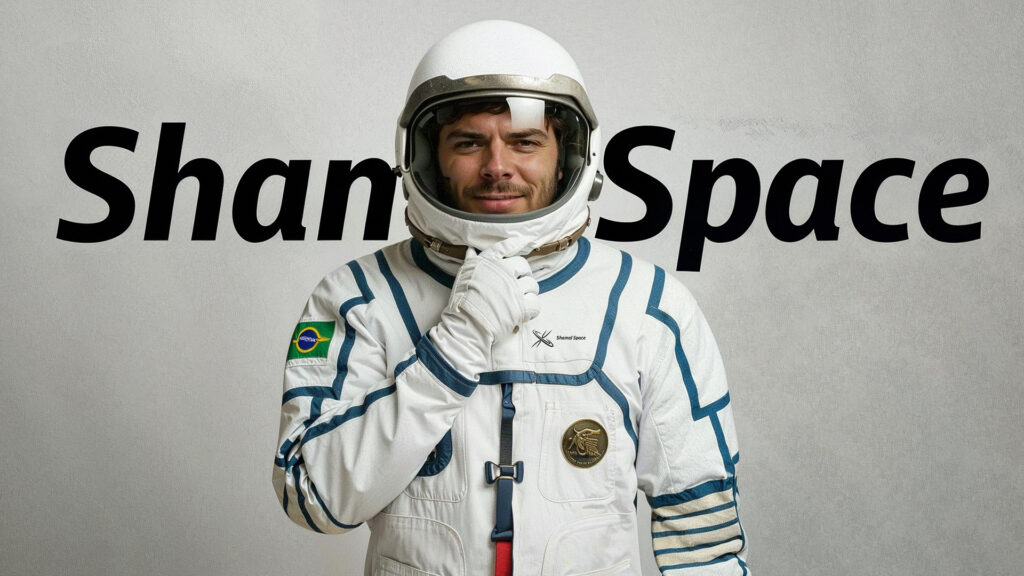Shamal Space: Building Satellites on $5K and Redefining Deep Tech

Forget seed rounds. Forget government grants. Forget the multi-million dollar R&D budgets of legacy aerospace giants.
Meet Shamal Space, the bootstrapped deep tech startup building satellites and advanced navigation systems for less than $5,000 per project.
Yes, you read that right; less than the cost of a used car.
Founded by Gilberto Damasceno Jr., Shamal Space isn’t just building hardware; they’re building a new playbook for innovation in one of the world’s most capital-intensive industries. Their story is a masterclass in extreme frugality, AI-accelerated development, and the power of building what the market actually wants.
This isn’t just a startup story. It’s a revolution built on constraints.
The Problem: A Broken System
As Gilberto notes — referencing a recent Business Runway piece on Anduril — the traditional aerospace and defense industry is built around a slow, seasonal government procurement matrix that often favors “the usual suspects.”
New entrants face nearly insurmountable barriers. Shamal Space decided to bypass the system entirely.
Their philosophy, forged over two years of evolution from consultancy to hardware developer: Don’t wait for permission. Build for the market.
“Ideas only don’t sell, working hardware does. Clients and investors seek TRL-8/9 results, not slides or slogans.” — Gilberto Damasceno Jr.
The Playbook: Building an Empire on Pocket Change
How do you build satellites and inertial navigation systems (INS) with less than $5K per project, zero VC funding, no angels, and no public grants?
You rewrite every rule.
Revenue-Funded R&D
Shamal Space follows a simple, brutal discipline: “Make what people already want.” They listen to customers seeking real alternatives to legacy systems, deliver profitable products like their XYTracker-PRO and INS units, and then reinvest those profits into the next R&D cycle. It’s a closed loop fueled by market demand, not investor speculation.
AI as the Great Equalizer
This is their secret weapon. While legacy firms measure development in months or years, Shamal Space measures it in days or hours.
“We employ a combination of LLMs and simulators to design architectures, model rival products, optimize COTS parts and test thermal, radiation and vibration resilience before any solder joint or code line — reducing development from months to days. From days to hours. Fast. Cheap. Effective.” — Gilberto Damasceno Jr.
AI isn’t a feature; it’s their entire R&D department, enabling a tiny team to achieve impossible speed and efficiency.
Extreme Frugality as a Moat
Operating on less than $5K per project forces radical resourcefulness. It means leveraging commercial off-the-shelf (COTS) parts, optimizing every design choice for cost, and building only what is absolutely essential.
This constraint isn’t a weakness; it’s a competitive advantage that legacy players (bloated by billion-dollar budgets) cannot replicate.
The results are staggering. Within ten months, they prototyped two proprietary INS units (idea to Proof of Concept in 30 days) and took a picosatellite concept to a planned stratospheric flight test in late 2025.
Founder Lessons from the Frugal Frontier
- Your Constraints Are Your Strategy. Don’t have millions? Good. Use extreme frugality to force innovation and build a leaner, faster model your bloated competitors can’t copy.
- Build Hardware Like Software. Leverage AI simulation and rapid prototyping to drastically shorten development cycles, even for complex physical products.
- Revenue Is the Best Funding. Focus relentlessly on building what customers will pay for today. Use those profits to fund the vision for tomorrow. The market is a harsher, but ultimately more honest, investor than any VC.
- Permission Is for Incumbents. True disruption rarely comes from following the established rules or waiting for approval. Build the solution the market needs, and make the old rules irrelevant.
Final Word
Shamal Space is proving that the future of deep tech isn’t just about massive capital injections. It’s about a new kind of architecture: AI-assisted design, radical frugality, and relentless execution.
As Gilberto aptly puts it:
“Perhaps our most valuable product isn’t a satellite or an INS, it’s our business model.”
They aren’t just building satellites. They’re building Aerospace & Defense 2.0. And they’re doing it without asking anyone for permission.
Gilberto is the first to credit his success to collaboration, the ‘war brothers’ who shared the mission: Lester Faria, Prof. Dr. from Assimetry S,T&I Consulting, and Alexander Melo from Navollo Aerospace. Together, they’ve proven that competence, trust, and shared vision can move mountains.
“This is a result of a competent job conducted in conjunction with my partners and war brothers Lester Faria, Prof. Dr. from Assimetry S,T&I Consulting and Alexander Melo from Navollo Aerospace. Fortuna Audaces Sequitur.” — Gilberto Damasceno Jr.